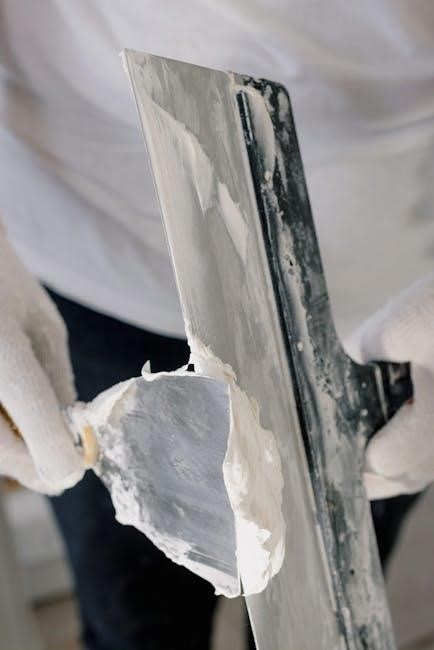Breathing techniques for labor are essential tools to manage pain, reduce stress, and promote relaxation․ They empower mothers to stay focused and calm during childbirth, enhancing overall experience․

Overview of Breathing Techniques
Breathing techniques for labor are methods designed to help manage pain, reduce stress, and maintain calm during childbirth․ These techniques, often learned during pregnancy, focus on deep, rhythmic breathing to enhance relaxation and oxygen supply․ They are adaptable to different labor stages, from early contractions to active pushing․ By practicing these techniques, women can gain control over their breathing, which helps in coping with discomfort and staying focused․ Breathing techniques also promote emotional well-being, reducing anxiety and fostering a more positive birth experience․ They are a cornerstone of natural pain management and are widely recommended by childbirth educators and healthcare providers․
Importance of Breathing During Labor
Breathing during labor plays a crucial role in maintaining both physical and emotional well-being․ Proper breathing techniques ensure a steady oxygen supply to the mother and baby, which is vital for energy and endurance․ They help manage pain by distracting the mind and relaxing the body․ Additionally, controlled breathing reduces stress and anxiety, promoting a calmer and more focused mindset․ By maintaining emotional stability, women can approach contractions more confidently․ Effective breathing also supports the body’s natural processes, making labor more efficient․ Overall, breathing is a foundational tool that enhances the entire childbirth experience, making it more manageable and empowering for mothers․

Popular Breathing Techniques for Labor
Techniques like Lamaze, diaphragmatic breathing, and box breathing are widely practiced; These methods help manage pain, reduce stress, and promote relaxation, ensuring a calmer labor experience․
Lamaze Breathing Technique
The Lamaze breathing technique, developed by Dr․ Fernand Lamaze, is a widely used method during labor․ It involves slow, deep breathing to help manage pain and stay focused․ Women are encouraged to practice this technique during pregnancy to build confidence and control․ The method emphasizes rhythmic breathing patterns, which can vary depending on the intensity of contractions․ This technique not only aids in oxygen supply to the baby but also helps the mother maintain relaxation and composure․ By fostering a sense of empowerment, Lamaze breathing contributes to a more positive and manageable childbirth experience․

Diaphragmatic Breathing
Diaphragmatic breathing, also known as belly breathing, is a natural technique that engages the diaphragm for deeper breaths․ During labor, it helps reduce breathlessness and promotes relaxation by maximizing oxygen intake for both mother and baby․ This method involves inhaling deeply through the nose, allowing the abdomen to rise as the diaphragm descends, and exhaling slowly through the mouth․ It is often recommended by childbirth educators as an effective way to manage pain and stress․ Practicing diaphragmatic breathing during pregnancy can enhance its benefits during labor, fostering a calmer and more controlled experience․ Regular practice strengthens breathing muscles and improves overall labor comfort, making it a valuable skill for childbirth․
Box Breathing Method
The Box Breathing Method, also known as the 4-4-4 technique, is a simple yet effective breathing pattern for labor․ It involves inhaling for a count of four, holding the breath for four seconds, and exhaling for four seconds․ This creates a “box” shape with the breath cycle․ The method helps maintain focus, reduces anxiety, and provides a sense of control during contractions․ By slowing down breathing, it lowers stress hormones and promotes relaxation․ Regular practice during pregnancy enhances its effectiveness during labor, making it easier to stay calm and manage discomfort․ The structured rhythm of Box Breathing also encourages mindfulness, helping mothers stay present and centered throughout the birthing process․ Its simplicity makes it accessible and easy to integrate into labor strategies․

Benefits of Breathing Techniques
Breathing techniques offer significant benefits, including pain management, enhanced comfort, and relaxation during labor, empowering mothers and supporting their emotional stability and well-being throughout the process․
Pain Management and Comfort
Breathing techniques are invaluable for managing pain and enhancing comfort during labor․ By focusing on deep, rhythmic breathing, women can reduce the intensity of contractions and maintain relaxation․ These methods help shift focus away from pain, promoting a sense of control and calmness․ Techniques like Lamaze and diaphragmatic breathing encourage slow, intentional breaths, which can alleviate discomfort and prevent overwhelming sensations․ Regular practice during pregnancy strengthens respiratory muscles, improving oxygen supply to both mother and baby․ This consistent oxygen flow supports the baby’s well-being and reduces fatigue, allowing mothers to conserve energy for the labor process․ Breathing techniques also help reduce muscle tension, creating a more relaxed environment for childbirth, and empowering women to approach labor with confidence and resilience․

Reduction of Anxiety and Stress
Breathing techniques play a crucial role in minimizing anxiety and stress during labor․ Deep, controlled breathing helps calm the mind and body, reducing feelings of panic and overwhelm․ By focusing on steady breaths, women can create a mental distraction from stressors, fostering a sense of calm and focus․ Techniques like box breathing and Lamaze methods encourage mindfulness, helping mothers stay present and centered․ Regular practice during pregnancy builds confidence, reducing fear of the unknown․ This mental preparation enhances emotional resilience, allowing women to approach labor with a positive mindset․ Breathing techniques also lower cortisol levels, promoting a more relaxed and serene environment for childbirth, which can lead to a more manageable and empowering experience overall․

Practicing Breathing Techniques
Consistent practice of breathing techniques during pregnancy is vital for mastering them during labor․ Regular exercises enhance muscle memory and improve breathing control, ensuring effectiveness when needed most․

How to Practice During Pregnancy

Practicing breathing techniques during pregnancy involves regular exercises to build muscle memory and improve control․ Start with deep, rhythmic breathing, focusing on abdominal expansion․ Sit comfortably, inhale deeply through the nose, allowing the belly to rise, and exhale slowly through the mouth․ Practice light breathing by taking shallow breaths at twice the normal rate․ Incorporate these techniques into daily routines, such as during meditation or while resting․ Partner involvement enhances coordination and support․ Regular practice ensures these techniques become second nature, providing comfort and confidence during labor․ Consistency strengthens respiratory muscles, preparing the body for the physical demands of childbirth․ Dedication to practice yields significant benefits, empowering mothers-to-be with effective tools for managing labor․
Integrating Techniques into Labor
Integrating breathing techniques into labor involves applying practiced methods to manage contractions effectively․ Begin with deep cleansing breaths at the start of contractions to calm the mind and body․ Transition to lighter, faster breathing as intensity increases, maintaining focus and relaxation․ Use techniques like Lamaze or box breathing to stay grounded during peaks․ Partner support is crucial; synchronized breathing can enhance coordination and reassurance․ As labor progresses, adapt techniques to match changing intensity, ensuring continuous oxygen flow to both mother and baby․ Proper integration of breathing strategies helps conserve energy, reduces discomfort, and fosters a sense of control․ Consistent application of these methods creates a positive, empowering labor experience, aligning physical and emotional well-being․

Breathing techniques for labor empower mothers, enhancing comfort and control․ For in-depth guides, explore official breathing techniques for labor PDFs and trusted childbirth resources․
Breathing techniques for labor are powerful tools to enhance comfort, reduce stress, and manage pain during childbirth․ Methods like Lamaze, diaphragmatic breathing, and box breathing promote relaxation and focus․ Regular practice during pregnancy strengthens muscle memory and preparation for labor․ These techniques help maintain oxygen supply, calm the mind, and provide a sense of control․ They are adaptable to different labor stages, offering tailored strategies for contractions and delivery․ Practicing with a birth partner ensures coordination and support․ Emphasizing deep, rhythmic breaths helps manage anxiety and physical discomfort․ Exploring breathing techniques for labor PDFs provides comprehensive guides for expecting mothers․ These resources complement prenatal education, empowering women with knowledge and confidence for a positive birth experience․
Recommended Resources for Further Learning
For in-depth understanding, download breathing techniques for labor PDF guides from trusted sources like hospitals and childbirth education websites․ These resources provide detailed instructions, diagrams, and practice exercises․ The Lamaze International website offers certified materials on breathing methods․ Additionally, the American Pregnancy Association shares comprehensive PDFs on labor techniques․ Mobile apps like Kobo and Scribd offer accessible PDF guides․ Visit rotunda․ie for specific breathing techniques tailored to labor stages․ These resources are invaluable for expecting mothers seeking to master breathing techniques, ensuring a confident and prepared approach to childbirth․ They complement prenatal classes, offering a holistic learning experience for managing labor effectively․



